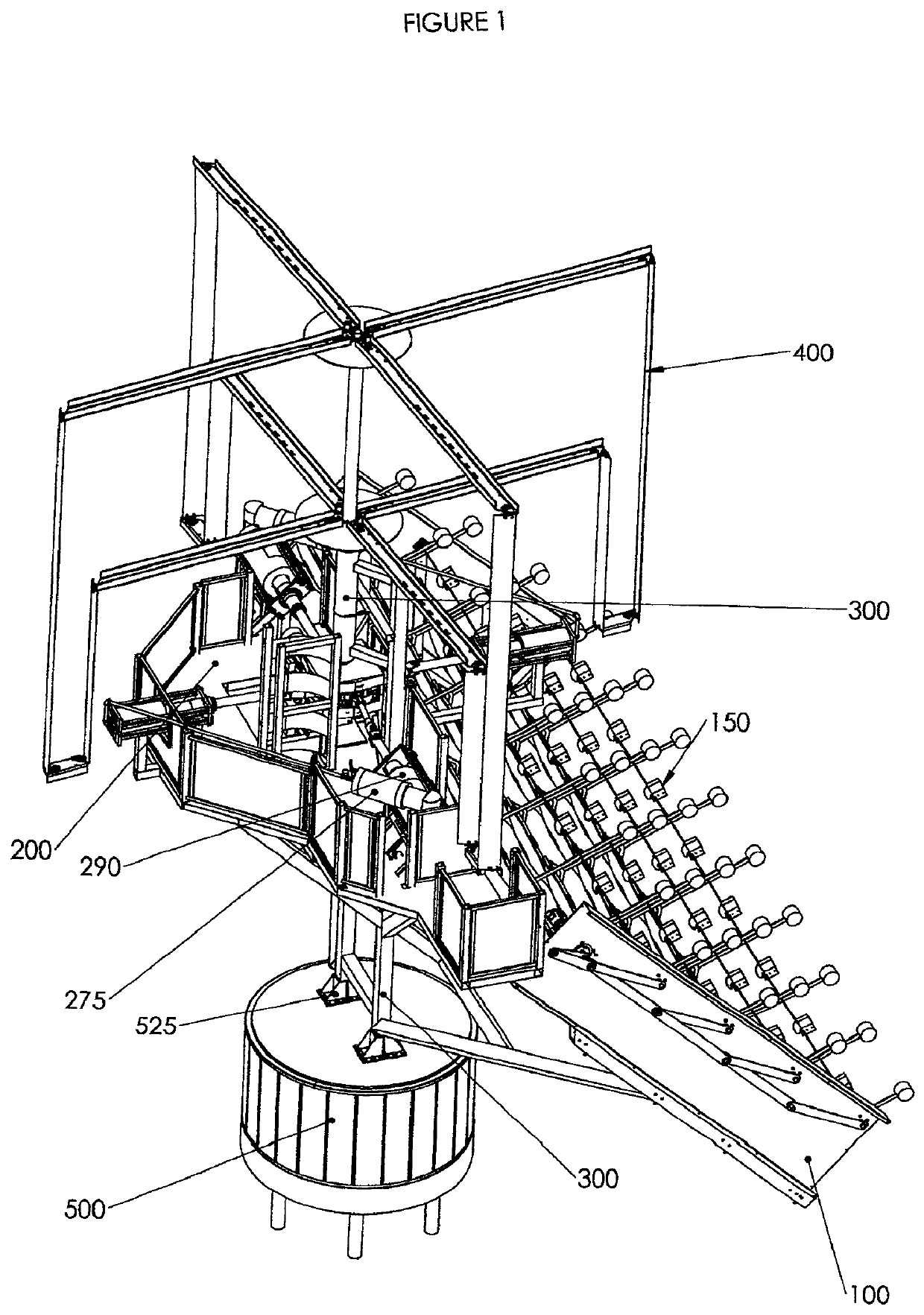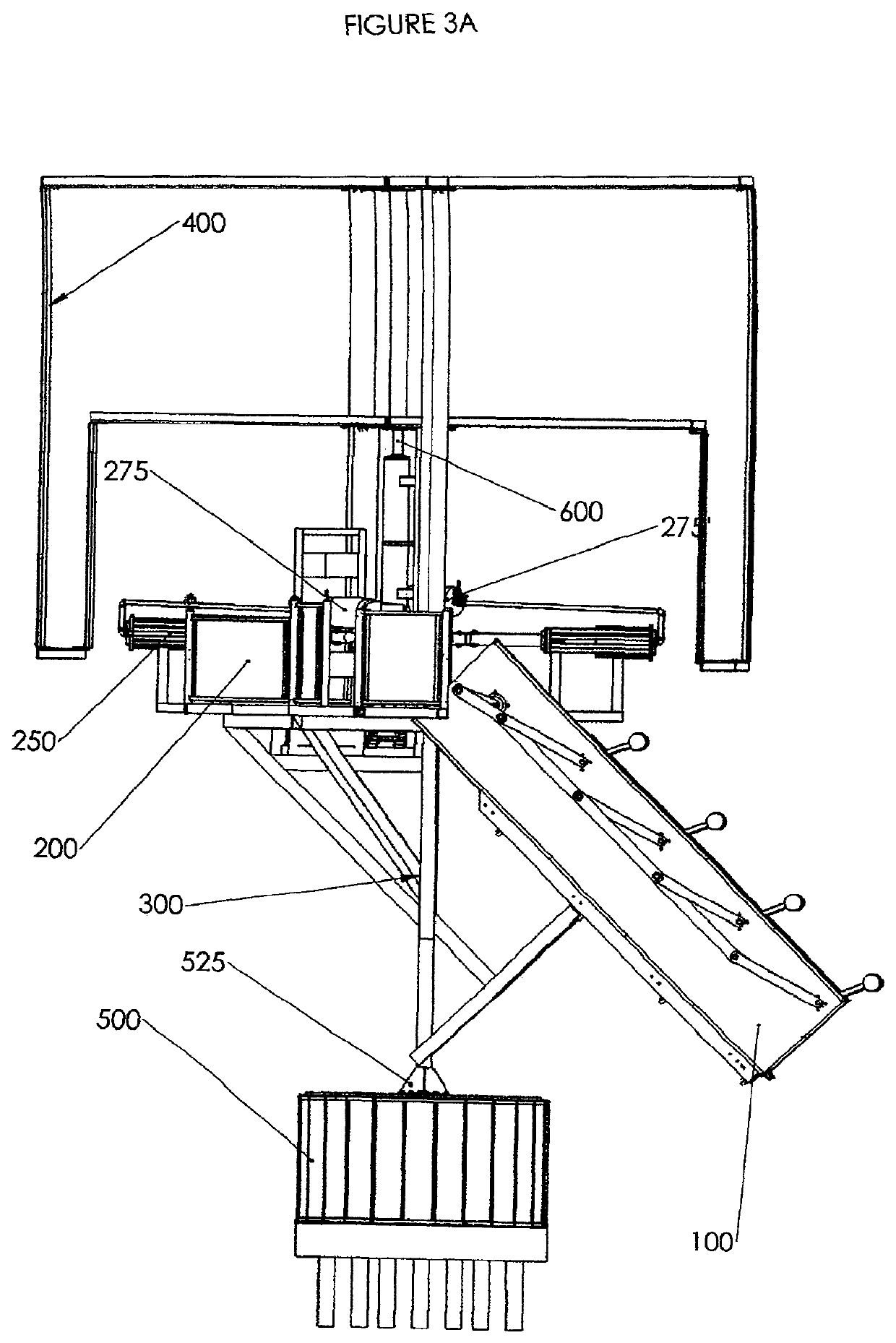Combined wind and solar power generating system
a combined wind and solar power generation and power generation technology, applied in the field of electric generating and storage systems, can solve the problems of ineffective systems offering a well-integrated approach, system variability has been a problem, and the system is not well integrated with each other, so as to improve the dispatchability of the system, facilitate load sharing, and boost the energy conversion capability of solar energy collectors
- Summary
- Abstract
- Description
- Claims
- Application Information
AI Technical Summary
Benefits of technology
Problems solved by technology
Method used
Image
Examples
Embodiment Construction
Overview
[0088]FIGS. 1 to 3E show the overall system. The solar collection array 100 is supported structurally by the main mast and frame assembly 300. Concentrated solar energy is redirected to heat engine storage compartments 290,290′, which act as heat sources for the heat engine 250, mounted on the main maintenance platform assembly 200. Efficiency of the heat engine is significantly increased by regenerators 275,275′ incorporated into the heat engine design.
[0089]The main mast and frame assembly 300 also provides structural support for the vertical axis wind turbine assembly (windmill arm and blade assembly) 400. The windmill arm and blade assembly rotate on the main vertical driveshaft 600. Structural moment and axial support of the main mast and frame assembly is provided by the rotator baseplate 525. Vertical axis or azimuth control for the entire assembly is provided by the base rotator assembly 500 which supports the rotator baseplate 525.
[0090]Electricity is produced from ...
PUM
 Login to View More
Login to View More Abstract
Description
Claims
Application Information
 Login to View More
Login to View More - R&D
- Intellectual Property
- Life Sciences
- Materials
- Tech Scout
- Unparalleled Data Quality
- Higher Quality Content
- 60% Fewer Hallucinations
Browse by: Latest US Patents, China's latest patents, Technical Efficacy Thesaurus, Application Domain, Technology Topic, Popular Technical Reports.
© 2025 PatSnap. All rights reserved.Legal|Privacy policy|Modern Slavery Act Transparency Statement|Sitemap|About US| Contact US: help@patsnap.com



